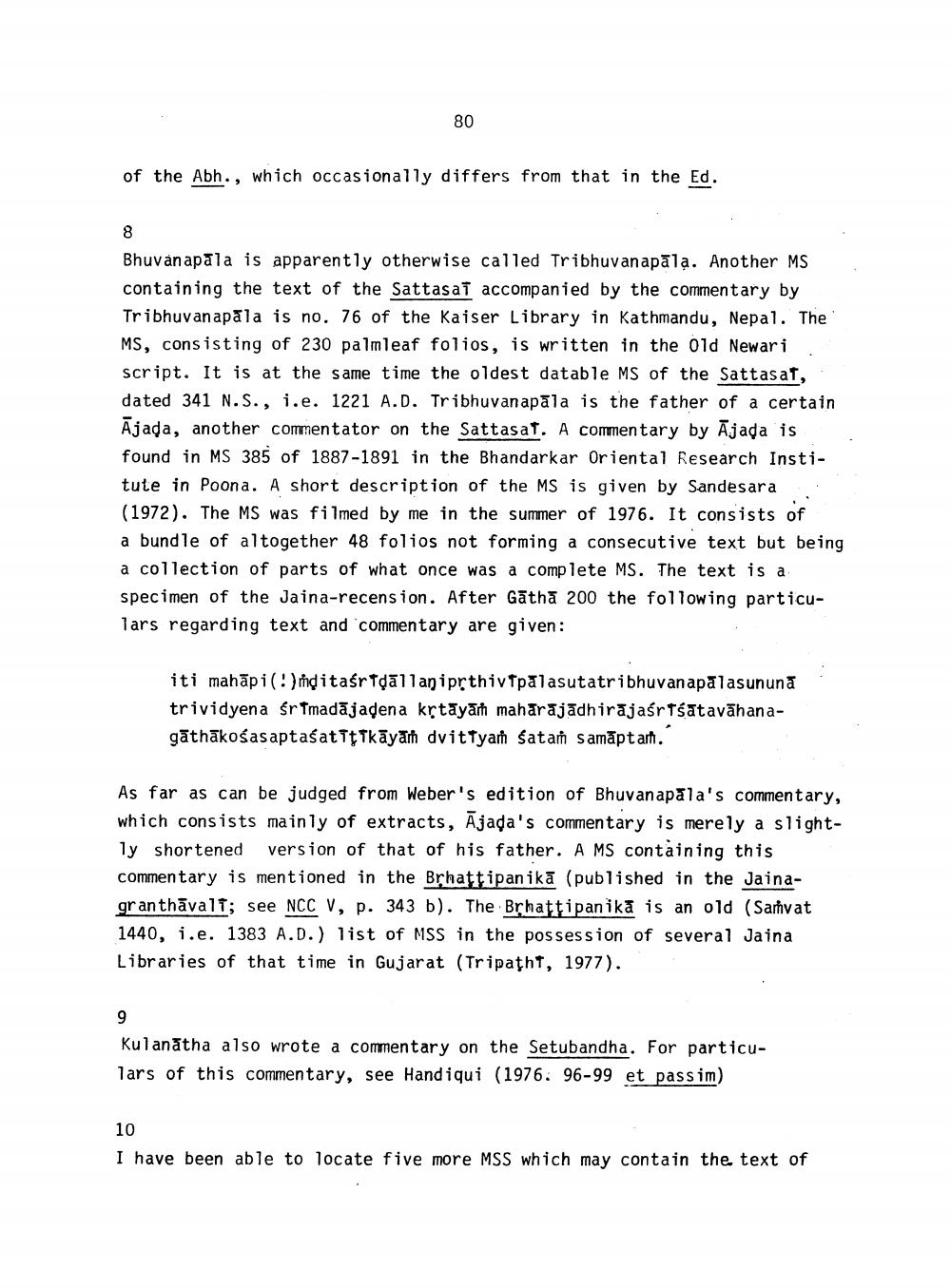________________
of the Abh., which occasionally differs from that in the Ed.
8
80
Bhuvanapala is apparently otherwise called Tribhuvanapala. Another MS containing the text of the Sattasaf accompanied by the commentary by Tribhuvanapala is no. 76 of the Kaiser Library in Kathmandu, Nepal. The MS, consisting of 230 palmleaf folios, is written in the Old Newari script. It is at the same time the oldest datable MS of the Sattasaf, dated 341 N.S., i.e. 1221 A.D. Tribhuvanapala is the father of a certain Ajada, another commentator on the Sattasat. A commentary by Ajada is found in MS 385 of 1887-1891 in the Bhandarkar Oriental Research Institute in Poona. A short description of the MS is given by Sandesara (1972). The MS was filmed by me in the summer of 1976. It consists of a bundle of altogether 48 folios not forming a consecutive text but being a collection of parts of what once was a complete MS. The text is a specimen of the Jaina-recension. After Gatha 200 the following particulars regarding text and commentary are given:
9
iti mahāpi()ditasrtdallanipṛthivтpalasutatribhuvanapalasunun trividyena SrTmadajadena kṛtāyah mahārājādhirajasratavahanagāthākosasaptasatītтkäyä dvittya Satam samaptar.
As far as can be judged from Weber's edition of Bhuvanapala's commentary, which consists mainly of extracts, Ajada's commentary is merely a slightly shortened version of that of his father. A MS containing this commentary is mentioned in the Brhattipanika (published in the Jainagranthavalf; see NCC V, p. 343 b). The Bṛhattipanika is an old (Safvat 1440, i.e. 1383 A.D.) list of MSS in the possession of several Jaina Libraries of that time in Gujarat (Tripathт, 1977).
Kulanatha also wrote a commentary on the Setubandha. For particulars of this commentary, see Handiqui (1976. 96-99 et passim)
10
I have been able to locate five more MSS which may contain the text of




